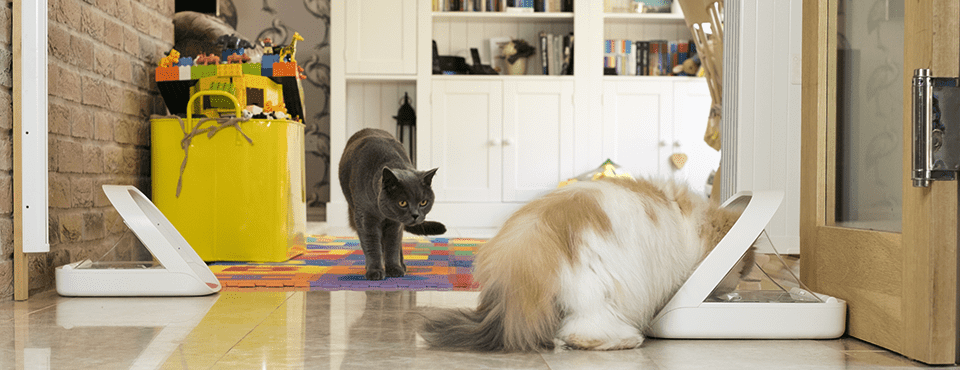How to protect your dog from fleas and ticks
HEALTH & PROTECTION
10 May, 2019
READ 6 minutes

Fleas, ticks and other parasites are the last thing you want in your home and on your dog although they are a constant risk for dogs throughout their lives. Therefore, it is important to be proactive and prevent parasites on your friendly companion.
The first step in protecting your home and your dog against fleas and ticks should be talking to your vet about your options for prevention and protection.
You should also be able to recognize the signs of flea and tick infestation on your dog, as these will help you get the right protective treatment in place.
FLEAS ON DOGS
Fleas are small and can be difficult to spot running around underneath your dog’s fur – you may even notice them on yourself before you notice them on your dog! Fleas and their bites are unpleasant for your poor dog and can cause serious itching, hair loss, and in some dogs, an allergic reaction.
Fleas can present a big risk at home as a single flea can lay up to 40 to 50 eggs a day, infesting your home and your dog’s environment. Flea larvae burrow deep into bedding and carpet and can even rest dormant for an extended period. To control the infestation and break this life cycle, it is necessary to use products that provide extended protection such as Bravecto® that will protect for 12 weeks with just one dose.

SIGNS OF FLEAS ON DOGS:
- Excessive scratching and licking
- Allergic dermatitis (red, inflamed sores or rashes)
- ‘Flea dirt’, small brown specks on your dog’s skin or fur
- Hair loss

TICKS ON DOGS
Ticks are another common infestation problem in household pets. They look a little bit like small spiders, but with an oval shaped body. They are blood-sucking pests, and their bodies expand as they feed.
Ticks can transmit the bugs that cause diseases, such as biliary, a disease that causes red blood cell breakdown causing lethargy, fever, jaundice and is potentially fatal. As ticks can carry bacteria and other agents which cause various diseases, ticks on a dog must be removed as they pose a risk to you and your dog.
SIGNS OF TICKS ON DOGS:
- Excessive licking or biting
- Head shaking
- A small bump with legs which you see or feel while stroking your dog
If you see any of these signs, be sure to check your dog over, including looking inside the ears and parting the fur to look more closely. If you find a tick in your house while cleaning, check your dog.
HOW TO REMOVE A TICK
Put on a pair of rubber or latex gloves to reduce the chances of the tick passing on an infection to you. Take a pair of tweezers and grab hold of the tick as close as possible to the dog’s skin without hurting or pinching the dog. Pull the tick out in a straight motion, being careful not to twist or crush the tick, and check to see that the tick has been removed from your dog’s skin.
If there is anything left behind, take your dog to the vet. If you do not feel confident in removing ticks, visit your vet so they can help you.

HOW CAN FLEAS AND TICKS BE TREATED ON DOGS?
If your dog has fleas or ticks, your vet can advise on the best course of treatment.
There are many options available for pet owners, including spot-on applications and flavoured chews. Choose the form that works best for you and your dog.
PROTECTING YOUR HOME AGAINST FLEAS AND TICKS
It is perfectly normal to be worried about having fleas and ticks in your home, but there are steps you can take to reduce the chances of these parasites, and to protect your dog from infestation.
In order to reduce the risk of fleas and ticks setting up in your home, vacuum your house regularly, and wash your dog’s bedding at least once a week.
Combined with effective control treatments, these simple steps will mean your dog is much less likely to find themselves host to a flea and tick problem.
Fleas can be brought into your home either with your dog, your family, or animal and human visitors. If you find fleas in your house, don’t wait to see if more appear. Finding one is a sign there are others, and fleas can multiply quickly. You’ll be able to look for the signs of fleas on your dog such as excessive scratching and flea droppings, which look like fine dirt, on the coat. One way to find out if the small dark specks are flea dirt is to put them on a white paper towel and add just a drop or two of water. A red color from the digested blood will soon appear around the flea dirt on the towel.
Ticks, on the other hand, are usually brought in by your dog, as ticks hitchhike into houses by latching on to your dog’s fur. It is a good idea to help reduce the risk of ticks on your dog by brushing your dog when coming home from walks and before going into the house. There is also one type of tick, called the Brown Dog Tick, that can be found inside buildings.

PREVENTING FLEAS AND TICKS ON DOGS
Many believe that fleas and ticks are a summer problem, and prevention is only necessary in the hotter months of the year. While fleas certainly prefer it while it is warm and humid conditions, modern central heating means we cater to their tastes year-round. Caring for your pet year-round and preventing parasites is safe and effective, as there are easier and more convenient control options available.
Using a fast-acting, long-lasting treatment, such as Bravecto®, which is easy to apply allows you to be worry-free, safe in knowing your dog is protected long- term against parasites. Correct and convenient control means your dog’s well-being is looked after, reducing its risk of irritation and exposure to transmittable disease. Ask your vet about treatments and discuss your options.
RELATED POSTS
-

Learn about canine babesiosis, a tick-borne disease that affects dogs worldwide. Discover its symptoms, treatments, and how to prevent it.
-

Explore how diabetes impacts cats, its signs, risk factors, and effective management through medication and diet for a healthier feline life.
-

Diabetes affects an estimated 1 in 300 dogs, diabetes is more common in middle-aged and older dogs (4-14 years of age), it can be diagnosed in dogs of any age, including young dogs. Read more.
-

Ever wonder how your dog experiences the world? Why he or she sniffs everything, everywhere? Read more and find out








